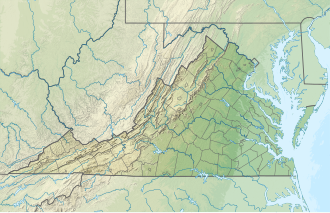| Loudoun Heights | |
|---|---|
 Loudoun Heights from U.S. Rt. 340 in West Virginia | |
| Highest point | |
| Elevation | 1,175 ft (358 m) [1] |
| Prominence | 340 ft (100 m) |
| Coordinates | 39°18′28″N77°44′19″W / 39.30778°N 77.73861°W [2] |
| Geography | |
| Location | Loudoun County, Virginia / Jefferson County, West Virginia, U.S. |
| Parent range | Blue Ridge Mountains Appalachian Mountains |
| Topo map | USGS Harpers Ferry |
Loudoun Heights, sometimes referred to as Loudoun Mountain, is the first peak of the Blue Ridge Mountain south of the Potomac River in Loudoun County, Virginia and Jefferson County, West Virginia. The northwestern slope is part of Harpers Ferry National Historical Park.

